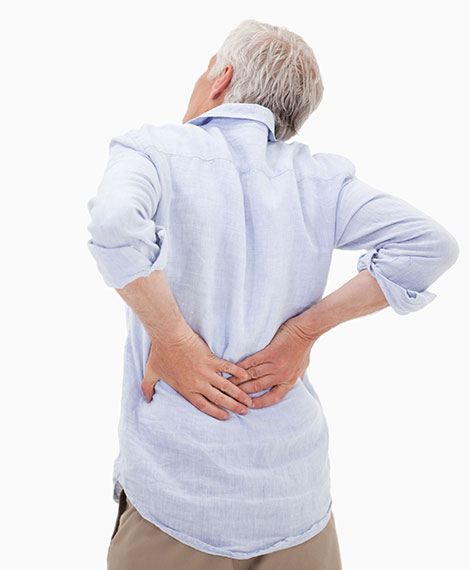
Chronic Pain
Pain, especially intractable or chronic pain, used to be something many patients simply had to learn to “live” with. In recent years, however, researchers have learned a great deal about pain and its physiological and psychological basis, leading to pain management treatments that can provide complete or partial pain relief.
Untreated pain can interfere with the healing process by affecting the immune system and leading to other undesirable results. In cases of back pain, discomfort can impede the rehabilitation process by interfering with exercise and increasing the risk of psychological distress. At Restore Medical Partners, we see Chronic Pain often and are extremely effective at diagnosing and treating chronic pain syndromes.
One important role in chronic pain management, is recognition of an immense variety of noninvasive, non-drug pain management techniques available for treating back pain and neck pain. A few of the most widely accepted in comprehensive pain management programs are the following:
- Exercise – physical exertion with the aim of increasing strength, increasing flexibility, and restoring normal motion. Includes the McKenzie method, water therapy, stretching exercises, aerobic routines and many others. May involve active, passive and resistive elements. Exercise is necessary for proper cardiovascular health, disc nutrition and musculoskeletal health.
- Manual techniques – manipulation of affected areas by applying force to the joints, muscles, and ligaments. Some evidence for the effectiveness of certain techniques is available.
- Behavioral modification – use of behavioral methods to optimize patient responses to back pain and painful stimuli. Cognitive therapy involves teaching the patient to alleviate back pain by means of relaxation techniques, coping techniques and other methods. Biofeedback involves learning to control muscle tension, blood pressure, and heart rate for symptomatic improvement.
- Superficial heating or cooling of skin – These pain management methods include cold packs and hot packs, ultrasound, and diathermy and should be used in conjunction with exercise.
- Electrotherapy – the most commonly known form of electrotherapy is transcutaneous electrical nerve stimulation (TENS). TENS therapy attempts to reduce back pain by means of a low-voltage electric stimulation that interacts with the sensory nervous system.
Randomized controlled trials have yielded either positive or neutral results regarding the efficacy of TENS as a treatment for back pain.
At restore Medical partners, we do our best to limit exposure to medication, but in some cases medical management may drastically improve quality of life for patients who suffer with Chronic pain. We understand the evolving nature of chronic pain, and recognize that medication management requires a regular interaction with our staff, physician assistants and physicians at Restore Medical Partners. We develop close relationships with our patients to make sure we minimize medication when we can and catch acute flares of pain before they can get out of control. Our medication management protocols may include:
- Analgesics – or pain medications, including acetaminophen. Caution in patients with kidney or liver disease.
- Nonsteroidal anti-inflammatory agents (NSAIDs) – includes aspirin, ibuprofen, naproxen and COX-2 inhibitors. Long-term use may cause kidney problems, gastrointestinal ulcers, and may slightly raise the risk of heart attack.
- Muscle relaxants – used to treat muscle spasms due to pain and protective mechanisms.
- Narcotic medications – most appropriate for acute or post-operative pain. Since use of narcotics entails risk of habituation or addiction if not properly supervised, these medications are used with extreme caution.
- Antidepressants and anticonvulsants – used to treat neuropathic (“nerve”) pain.
- Neuromodulating medications – used to treat neuropathic and muscular pain.
Finally, many patients at Restore Medical Partners have been to many Doctors and surgeons and have not been given a definitive answer about what is causing their pain. Our physicians are excellent at reviewing complex cases and explaining what exactly is the cause of your pain. Often, patients have been treated for an incorrect diagnosis, and we can identify and treat the correct pain generator. We may recommend interventional treatments to improve your quality of life and get you back to doing the things you enjoy.
Interventional techniques in pain management involve injections and/or placement of devices into the body. A multitude of invasive pain management therapies have been used to treat neck and back pain.
Some of the most popular interventional pain management techniques include:
- Injections (also known as blocks)
- Injections provide direct delivery of steroids or anesthetic into joints, ligaments, muscles, or around nerves. These injections may provide relief of pain and can be used to confirm if the injected structure is the source of the pain, clarifying the diagnosis. Epidural injections can provide temporary relief for upper extremity or lower extremity pain due to a pinched nerve in the spine.
- Radiofrequency Ablation
- This procedure involves deadening of painful nerves via heat administered through a small needle. This modality helps in approximately 60% of patients and lasts for months to years.
- Surgically implanted electrotherapy devices
- These are implantable spinal cord stimulators (SCS) and implantable peripheral nerve stimulators. These devices help reduce pain that radiates from the spine into the arms, ribs or legs.
Patients should keep in mind that there are many varieties of pain management programs to explore. This process can be confusing or frustrating at times, but the important point is to work proactively with your physician team members at Restore Medical Partners and not to give up if one initially encounters an unsatisfactory result.
While this process can be a significant challenge for patients enduring intense pain, once patients find an approach that they are comfortable with, it is likely that their condition and pain levels should improve.
REFERENCES:
http://www.mayoclinic.org/symptoms/joint-pain/basics/definition/sym-20050668


